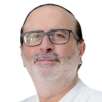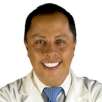The International Association for Dental Research (IADR) is the largest organization dedicated to foster knowledge on oral health through research worldwide. IADR supports and represents the oral health research community through its Divisions and Sections all over the world. Throughout the years, the organization has done an outstanding job in the communication and application of research findings. Before the IADR General Session in Barcelona, Spain we talked to IADR president Professor David M. Williams.
What's the importance of IADR in dentistry?
IADR is the leading organization worldwide for oral and dental research. We cover the full spectrum of dental research from the most fundamental cell and molecular research, to research into all aspects of dental care. We have 12,000 members worldwide in 35 Divisions and Sections. In the last five years there has been a strategic initiative to organize the Divisions and Sections into five Regions. These Regions have begun to arrange meetings on a regular basis and they appear to be satisfying a strong demand among researchers to meet others from the same part of the globe. We envisage that the Regions will become increasingly important in the future.
embedImagecenter("Imagecenter126",126);
What are the main accomplishments achieved during your administration as president?
I am particularly proud of the initiative that I have led to establish a programme of research to reduce global inequalities in oral health. This initiative will identify gaps in our existing knowledge and make recommendations as to how we can better implement measures, whether in prevention or treatment, which we know to be effective in small-scale studies. We are committed to demonstrating clear, measurable improvements in oral health within three to five years.
Why should general dentists pay attention to research?
Good dental care is based on sound evidence about the effectiveness, efficiency and safety of the treatments and interventions that dentists carry out in their day to day practice. This evidence all comes from research. The continuous advances that we all see in the treatments that are now available and improvements in oral health and wellbeing that we all enjoy come from research. A very significant proportion of all of this is undertaken by our members worldwide.
Is there a reliable source that validates quality of products/materials based on research?
Yes, you will find many abstracts at the IADR General Session that evaluate various products and materials used in the everyday practice of dentistry. The IADR Dental Materials Scientific Group is the largest scientific group of IADR with over 1,000 members. Members of this group publish in the Journal of Dental Research as well as many other high impact publications.
What type of research are you conducting?
My own research is into how we defend ourselves against pathogenic bacteria and other infectious agents. Specifically I am interested in the interaction between bacteria associated with periodontal disease and epithelial cells, which cover the surface of our body and line the mouth, airways and gut. These cells constitute the body’s first line of protection and defence and their effective function is absolutely fundamental to maintaining our health.
How do you see the future of IADR?
IADR has never been in a stronger position and I feel very positive about the future. Our membership is at an all time high and we have members from across the globe. The Scientific Groups, which are at the heart of the organisation, represent all areas of dental research and their membership is growing. Each year we recognise new Sections and Divisions, and the Regional Meetings are becoming increasingly well attended.
The Journal of Dental Research, our flagship publication, has yet again been recognised as the publication in which the oral and dental research with the highest impact gets published.
But we are never complacent. The Board of IADR, on which I am proud to serve, is careful to listen to the views of our members. We review our scientific meetings rigorously, to ensure we are meeting the wishes of our members. We also continue to invest significant sums each year in our Regional Development Program. This is helping to ensure that oral and dental research –wherever it is happens – is carried out to the highest standards of excellence. The populations we serve deserve nothing less.
Is Latin America reaching a professional research level?
The standard of oral and dental research in Brazil is rising each year, as can be seen from the Thomson Reuters National Science Indicators table, where Brazil now occupies thirteenth position. This owes a great deal to the inspirational leadership of members of the dental research community, and we are delighted this year to acknowledge Dra Maria Fidela de Lima Navarro, from the University of Sao Paolo as the next President of IADR. She was elected to that highly distinguished position by the worldwide membership of IADR. This is not only a tribute to the immense personal distinction of Dra Navarro, but it is a reflection of the esteem in which research in Brazil is now held.
How do IADR international divisions interact?
There are many ways in which our international Divisions can interact, but the most significant of these is the annual General Session and Exhibition. This will be happening in Barcelona this year and I look forward to welcoming delegates in record numbers from across the globe to what I know will be an outstanding festival of oral and dental science. Our conference will also provide an unique opportunity for researchers, from the newest to the most senior, to meet together; to renew old friendships and to establish new ones. I wish everyone a most successful, rewarding and enjoyable meeting.
What do you expect of the Barcelona meeting?
The IADR meeting in Barcelona will be the biggest in the history of the organisation. It will be attended by well over 6,000 delegates from around the globe; there will be 32 symposia, 5 hands-on workshops, and 3 Distinguished Lecture speakers – including from a Nobel Laureate. In addition, there will be over 4,500 oral and poster sessions based on research carried out by our members and attending delegates. This provides an unequalled opportunity for researchers to meet and exchange their findings and ideas. It is a remarkable testament to the value and importance that the global research community attaches to the meeting that they are attending in such amazing numbers at a time when resources are constrained. I have no doubt that the meeting will meet all of their expectations, and I am confident that many of the delegates will leave having picked up important new ideas and inspiration for their research. We look forward to welcoming them to our next meeting in San Diego in March 2011.
What will you say to a young researcher?
New young researchers are the lifeblood of our organisation and they are vital to the future of IADR. They have an enormously important role to play in the quest for better oral health for all. There is no more rewarding career, because they have the opportunity to carry out important research which has the potential to make a very real contribution to human health and wellbeing.
IADR has been an important part of my life. It has provided a tremendous platform for me to present my research and it has also given me access to a tremendous network of like-minded scientists from across the globe, many of whom have become collaborators and friends. I would encourage our young researchers to engage with IADR and to seize every opportunity that comes their way.
Resources
• IADR: www.iadr.org
MEXICO CITY, Mexico: The president of Mexico's largest dental expo, Ayub Safar Boueri, said to Dental Tribune Hispanic and Latin America that total ...
Josep Arnabat Domínguez, Profesor de la Universidad de Barcelona, es premiado durante el evento con el IADR Lasers & Bio-photonics Scientific Group ...
Officers of the American Dental Association held a meeting requested by Dental Tribune Latin America to seek solutions to the crisis in Haiti, specifically ...
La Asociación Internacional para la Investigación Dental (IADR) es la mayor organización dedicada a fomentar conocimientos sobre salud ...
The president of the Haiti Dental Association, Dr. Samuel Prophete, was invited by the Chicago Dental Society to give a speech at the opening session of the...
La Asociación Internacional de Investigación Dental (IADR) honró al Prof. Marcos Bartold con el Premio 2014 IADR/Straumann en Medicina ...
Dr. Giuseppe A. Romito, President of the Brazilian Division of IADR (2010-2012) and of the Brazilian Society of Periodontics (Sobrape) is a renowned ...
El Dr. Giuseppe A. Romito, presidente de la División Brasileña de IADR (2010-2012) y de la Sociedad Brasileña de Periodoncia (Sobrape),...
The predictability of regeneration of class II furcation defects is considered by many as the most challenging periodontal defect to treat. The main aspect...
El nuevo congreso odontológico y exposición comercial Miami Dental Meeting llevará a la ciudad de Miami a una selección de lo mejor de la odontología ...
Webinars en vivo
lun. 29 de abril 2024
10:30 CST (Mexico City)
Prof. Roland Frankenberger Univ.-Prof. Dr. med. dent.
Webinars en vivo
mar. 30 de abril 2024
11:00 CST (Mexico City)
Webinars en vivo
vie. 3 de mayo 2024
11:00 CST (Mexico City)
Webinars en vivo
mar. 7 de mayo 2024
18:00 CST (Mexico City)
Webinars en vivo
jue. 9 de mayo 2024
18:00 CST (Mexico City)
Webinars en vivo
lun. 13 de mayo 2024
7:00 CST (Mexico City)
Webinars en vivo
lun. 13 de mayo 2024
11:00 CST (Mexico City)
Doc. MUDr. Eva Kovaľová PhD.



 Austria / Österreich
Austria / Österreich
 Bosnia y Herzegovina / Босна и Херцеговина
Bosnia y Herzegovina / Босна и Херцеговина
 Bulgaria / България
Bulgaria / България
 Croacia / Hrvatska
Croacia / Hrvatska
 República Checa y Eslovaquia / Česká republika & Slovensko
República Checa y Eslovaquia / Česká republika & Slovensko
 Francia / France
Francia / France
 Alemania / Deutschland
Alemania / Deutschland
 Grecia / ΕΛΛΑΔΑ
Grecia / ΕΛΛΑΔΑ
 Italia / Italia
Italia / Italia
 Países Bajos / Nederland
Países Bajos / Nederland
 Nórdico / Nordic
Nórdico / Nordic
 Polonia / Polska
Polonia / Polska
 Portugal / Portugal
Portugal / Portugal
 Rumania y Moldavia / România & Moldova
Rumania y Moldavia / România & Moldova
 Eslovenia / Slovenija
Eslovenia / Slovenija
 Serbia & Montenegro / Србија и Црна Гора
Serbia & Montenegro / Србија и Црна Гора
 España / España
España / España
 Suiza / Schweiz
Suiza / Schweiz
 Turquía / Türkiye
Turquía / Türkiye
 Reino Unido e Irlanda / UK & Ireland
Reino Unido e Irlanda / UK & Ireland
 Internacional / International
Internacional / International
 Brasil / Brasil
Brasil / Brasil
 Canadá / Canada
Canadá / Canada
 EE UU / USA
EE UU / USA
 China / 中国
China / 中国
 India / भारत गणराज्य
India / भारत गणराज्य
 Japón / 日本
Japón / 日本
 Paquistán / Pākistān
Paquistán / Pākistān
 Vietnam / Việt Nam
Vietnam / Việt Nam
 ASIA / ASEAN
ASIA / ASEAN
 Israel / מְדִינַת יִשְׂרָאֵל
Israel / מְדִינַת יִשְׂרָאֵל
 Algeria, Morocco & Tunisia / الجزائر والمغرب وتونس
Algeria, Morocco & Tunisia / الجزائر والمغرب وتونس
 Oriente Medio / Middle East
Oriente Medio / Middle East
:sharpen(level=0):output(format=jpeg)/up/dt/2024/04/MarioElias-Fig1.jpg)
:sharpen(level=0):output(format=jpeg)/up/dt/2024/04/Ariel-Labanca_lecture-sequence.jpg)
:sharpen(level=0):output(format=jpeg)/up/dt/2024/04/Fig-1_Ramirez-P.jpg)
:sharpen(level=0):output(format=jpeg)/up/dt/2024/04/Dental-filling.jpg)
:sharpen(level=0):output(format=jpeg)/up/dt/2024/03/Figura-1_SPW.jpg)










:sharpen(level=0):output(format=png)/up/dt/2022/01/Sprintray_Logo_2506x700.png)
:sharpen(level=0):output(format=png)/up/dt/2015/09/Curaden.png)
:sharpen(level=0):output(format=png)/up/dt/2010/11/Nobel-Biocare-Logo-2019.png)
:sharpen(level=0):output(format=png)/up/dt/2022/01/Straumann_Logo_neu-.png)
:sharpen(level=0):output(format=png)/up/dt/2013/04/Dentsply-Sirona.png)
:sharpen(level=0):output(format=jpeg)/up/dt/e-papers/338233/1.jpg)
:sharpen(level=0):output(format=jpeg)/up/dt/e-papers/336829/1.jpg)
:sharpen(level=0):output(format=jpeg)/up/dt/e-papers/329684/1.jpg)
:sharpen(level=0):output(format=jpeg)/up/dt/e-papers/328283/1.jpg)
:sharpen(level=0):output(format=jpeg)/up/dt/e-papers/326428/1.jpg)
:sharpen(level=0):output(format=jpeg)/up/dt/e-papers/323247/1.jpg)
:sharpen(level=0):output(format=jpeg)/up/dt/2010/07/94e88ab1e05d4913b69ee52e983ef1bf-1.jpg)

:sharpen(level=0):output(format=jpeg)/up/dt/2024/04/MarioElias-Fig1.jpg)
:sharpen(level=0):output(format=gif)/wp-content/themes/dt/images/no-user.gif)
:sharpen(level=0):output(format=jpeg)/up/dt/2010/05/e55eca10cba5930b7d8267b1963dd047.jpg)
:sharpen(level=0):output(format=jpeg)/up/dt/2024/04/Grupo-IADR-Lasers-Bio-photonics.jpg)
:sharpen(level=0):output(format=jpeg)/up/dt/2010/03/3e415ad3708b77715036ae26cb7f8c73.jpg)
:sharpen(level=0):output(format=jpeg)/up/dt/2010/07/94e88ab1e05d4913b69ee52e983ef1bf.jpg)
:sharpen(level=0):output(format=jpeg)/up/dt/2010/03/afda2d4f811fd56ce6cfd6a3cd9564cc.jpg)
:sharpen(level=0):output(format=png)/up/dt/2017/01/32ad56aceb4d71748e950314ef58a9bb.png)
:sharpen(level=0):output(format=jpeg)/up/dt/2010/06/66c8e0cede8fa5569b9c3d0dfd5e0d75.jpg)
:sharpen(level=0):output(format=jpeg)/up/dt/2010/06/66c8e0cede8fa5569b9c3d0dfd5e0d75-1.jpg)
:sharpen(level=0):output(format=jpeg)/up/dt/2010/09/9219e2c59f09655fef98a6e28fe653b7.jpg)
:sharpen(level=0):output(format=jpeg)/up/dt/2024/02/Miami_unspla.jpg)











:sharpen(level=0):output(format=jpeg)/up/dt/2024/04/MarioElias-Fig1.jpg)
:sharpen(level=0):output(format=jpeg)/up/dt/2024/04/Ariel-Labanca_lecture-sequence.jpg)
:sharpen(level=0):output(format=jpeg)/up/dt/2024/04/Fig-1_Ramirez-P.jpg)
:sharpen(level=0):output(format=jpeg)/up/dt/e-papers/336829/1.jpg)
:sharpen(level=0):output(format=jpeg)/up/dt/e-papers/329684/1.jpg)
:sharpen(level=0):output(format=jpeg)/up/dt/e-papers/328283/1.jpg)
:sharpen(level=0):output(format=jpeg)/up/dt/e-papers/326428/1.jpg)
:sharpen(level=0):output(format=jpeg)/up/dt/e-papers/323247/1.jpg)
:sharpen(level=0):output(format=jpeg)/up/dt/e-papers/338233/1.jpg)
:sharpen(level=0):output(format=jpeg)/up/dt/e-papers/338233/2.jpg)
:sharpen(level=0):output(format=jpeg)/wp-content/themes/dt/images/3dprinting-banner.jpg)
:sharpen(level=0):output(format=jpeg)/wp-content/themes/dt/images/aligners-banner.jpg)
:sharpen(level=0):output(format=jpeg)/wp-content/themes/dt/images/covid-banner.jpg)
:sharpen(level=0):output(format=jpeg)/wp-content/themes/dt/images/roots-banner-2024.jpg)
To post a reply please login or register